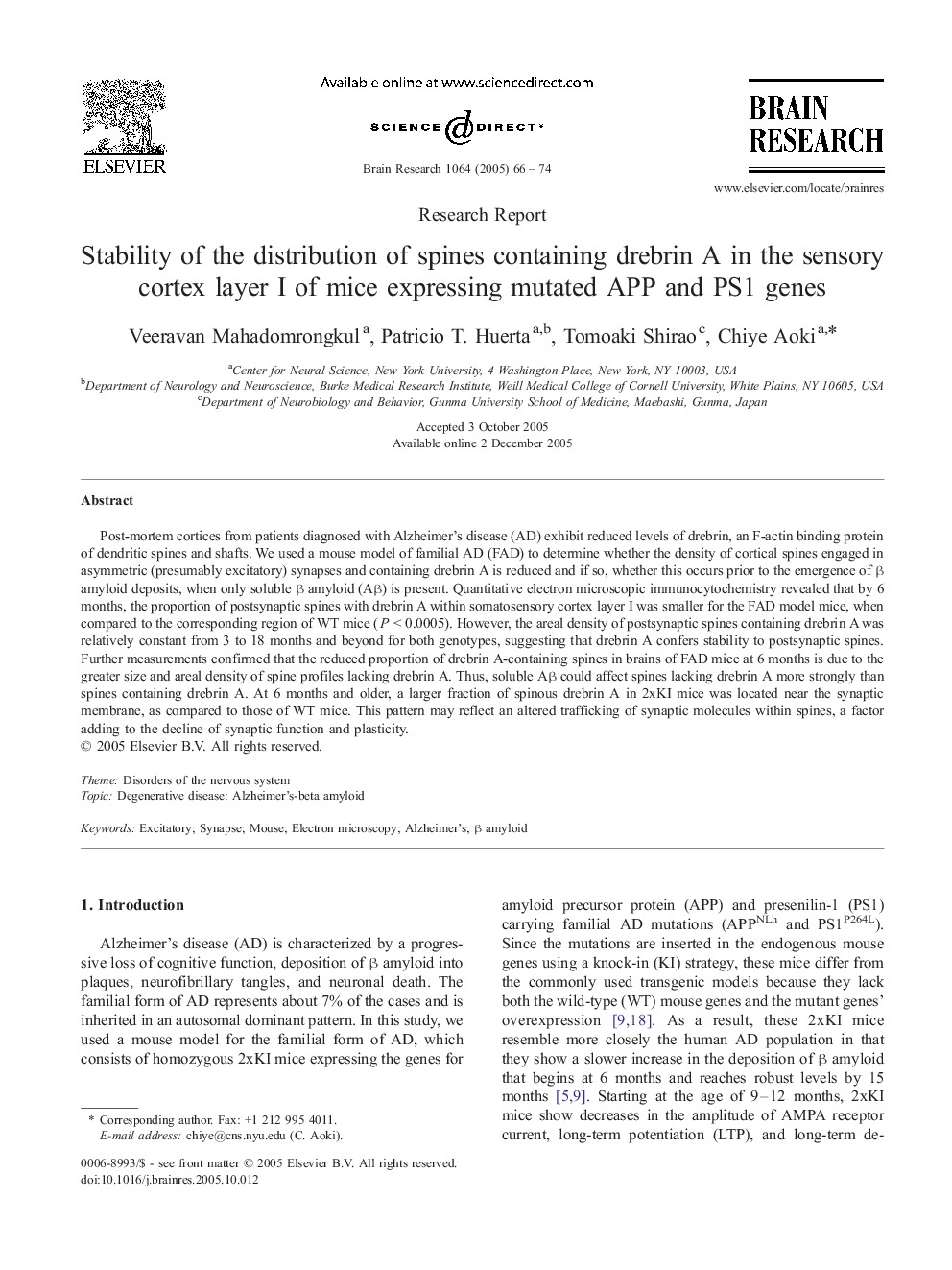| Article ID | Journal | Published Year | Pages | File Type |
|---|---|---|---|---|
| 9415674 | Brain Research | 2005 | 9 Pages |
Abstract
Post-mortem cortices from patients diagnosed with Alzheimer's disease (AD) exhibit reduced levels of drebrin, an F-actin binding protein of dendritic spines and shafts. We used a mouse model of familial AD (FAD) to determine whether the density of cortical spines engaged in asymmetric (presumably excitatory) synapses and containing drebrin A is reduced and if so, whether this occurs prior to the emergence of β amyloid deposits, when only soluble β amyloid (Aβ) is present. Quantitative electron microscopic immunocytochemistry revealed that by 6 months, the proportion of postsynaptic spines with drebrin A within somatosensory cortex layer I was smaller for the FAD model mice, when compared to the corresponding region of WT mice (P < 0.0005). However, the areal density of postsynaptic spines containing drebrin A was relatively constant from 3 to 18 months and beyond for both genotypes, suggesting that drebrin A confers stability to postsynaptic spines. Further measurements confirmed that the reduced proportion of drebrin A-containing spines in brains of FAD mice at 6 months is due to the greater size and areal density of spine profiles lacking drebrin A. Thus, soluble Aβ could affect spines lacking drebrin A more strongly than spines containing drebrin A. At 6 months and older, a larger fraction of spinous drebrin A in 2xKI mice was located near the synaptic membrane, as compared to those of WT mice. This pattern may reflect an altered trafficking of synaptic molecules within spines, a factor adding to the decline of synaptic function and plasticity.
Keywords
Related Topics
Life Sciences
Neuroscience
Neuroscience (General)
Authors
Veeravan Mahadomrongkul, Patricio T. Huerta, Tomoaki Shirao, Chiye Aoki,
